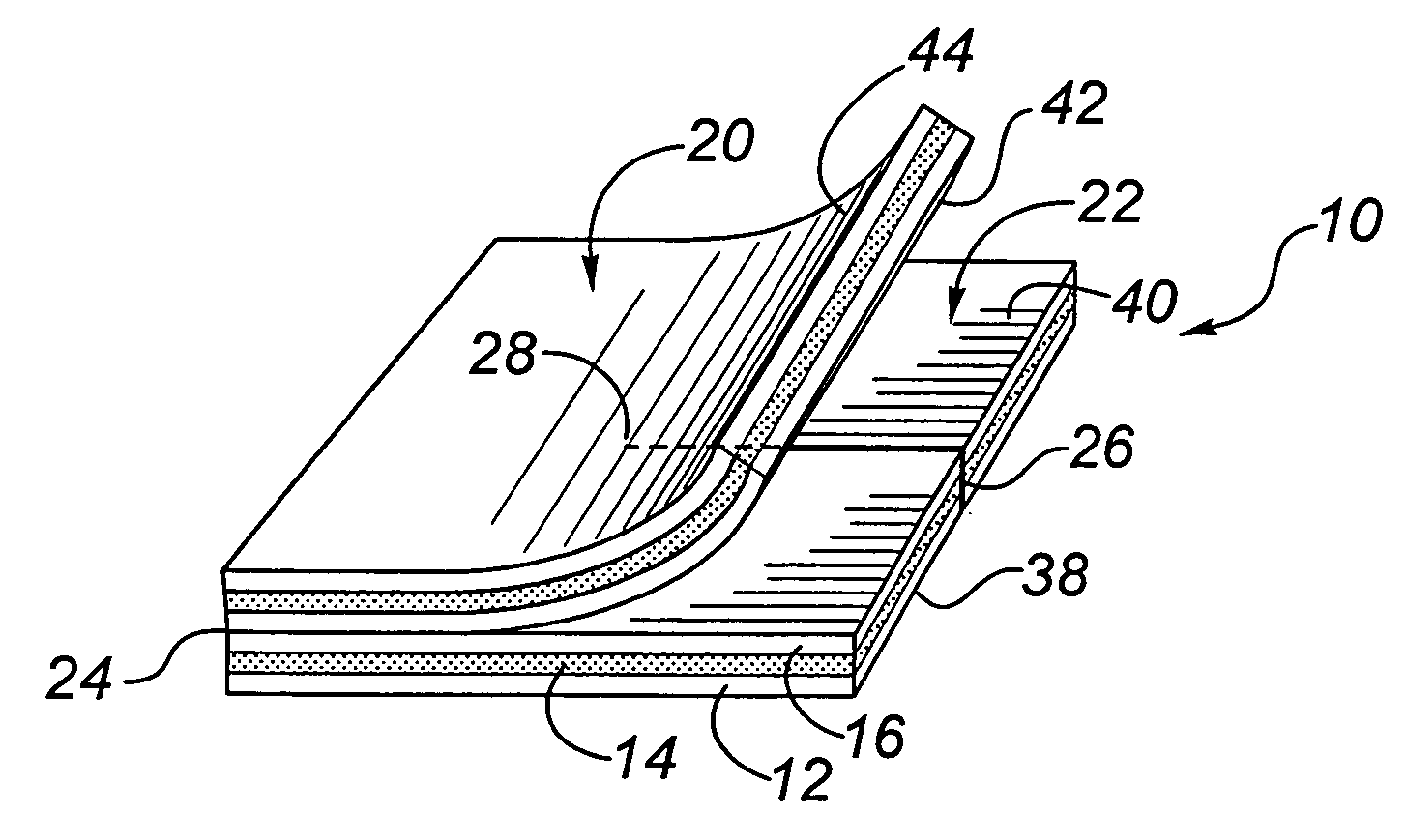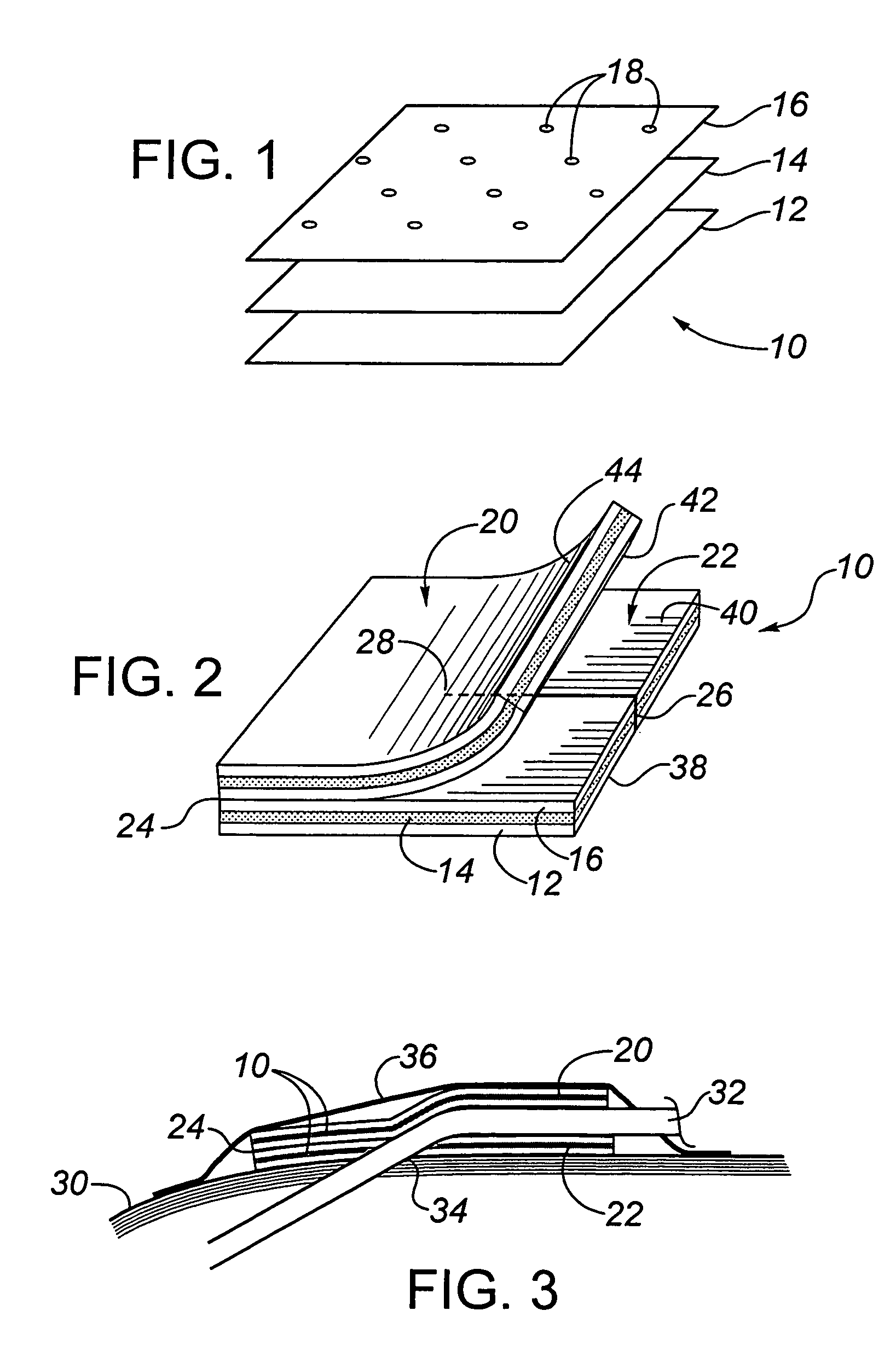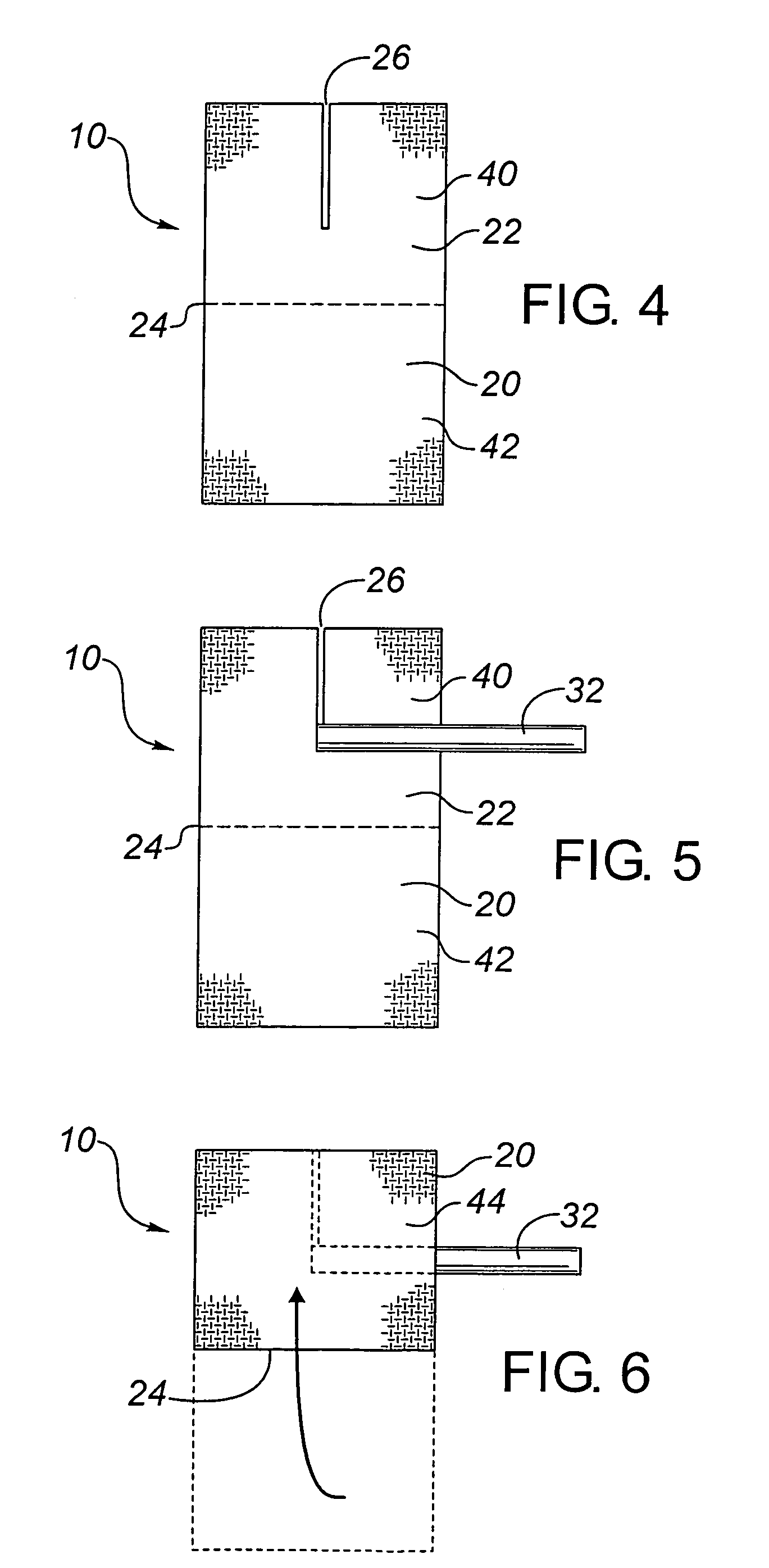Transcutaneous medical device dressings and method of use
a technology of medical devices and dressings, applied in the field of transcutaneous medical device dressings, can solve the problems of increasing hospital costs, high risk of infection from transcutaneous infection, and more cases of death,
- Summary
- Abstract
- Description
- Claims
- Application Information
AI Technical Summary
Benefits of technology
Problems solved by technology
Method used
Image
Examples
example 1
[0094]This example shows the preparation of a bilayer anti-microbial silver coating on a dressing material. A high density polyethylene dressing, DELNET™ or CONFORMANT 2™ was coated with a silver base layer and a silver / oxide top layer to generate a coloured anti-microbial coating having indicator value. The coating layers were formed by magnetron sputtering under the conditions set out in Table 1.
[0095]
TABLE 1Sputtering Conditions:Base LayerTop LayerTarget99.99% Ag99.99% AgTarget Size20.3 cm diameter20.3 cm diameterWorking Gas96 / 4 wt % Ar / O296 / 4 wt % Ar / O2Working Gas Pressure40 mTorr40 mTorrPower0.3 kW0.15 kWSubstrate Temperature20° C.20° C.Base Pressure3.0 × 10−6 Torr3.0 × 10−6 TorrAnode / Cathode Distance100 mm100 mmSputtering Time7.5–9 min1.5 minVoltage369–373 V346 V
[0096]The resulting coating was blue in appearance. A fingertip touch was sufficient to cause a colour change to yellow. The base layer was about 900 nm thick, while the top layer was 100 nm thick.
[0097]A zone of inhib...
example 2
[0100]This example is included to demonstrate a multilayer transcutaneous device dressing in accordance with the present invention. High density polyethylene mesh dressing material DELNET™ or CONFORMANT 2™ dressing was coated with a bilayer blue anti-microbial coating as set forth in Example 1. using the sputtering conditions of Table 1. Two layers of this coated dressing material were placed above and below an absorbent core material formed from needle punched rayon / polyester (SONTARA™ 8411). With the silver coating on both the first and third layers, the dressing may be used with either the blue coating side or the silver side in the skin facing position. For indicator value, it might be preferable to have the blue coating visible. The three layers were laminated together by ultasonic welding to produce welds between all three layers spaced at about 2.5 cm intervals across the dressing. This allowed the dressing to be cut down to about 2.5 cm size portions for smaller dressing nee...
example 3
[0102]This animal study evaluated four prototype catheter dressings, one of which was in made in accordance with Example 2 above, the others being 3 cm disc shaped catheter dressings of laminated dressing materials, having a thickness less than about 1 mm, formed with a slit to their center to fit beneath the catheter, and being coated with a silver coating deposited as in Example 1. The silver coatings were prepared in a full scale roll coater under conditions to provide coatings having the same properties set out in Examples 2 and 3 above.
[0103]The prototype dressings were as follows:[0104]1. Silver Catheter Dressing, prepared as in Example 2, with a top and a bottom dressing sized 5.1×5.1 cm, with a 2.6 cm slit in the bottom dressing, as an example of this invention.[0105]2. Silver Disc 1—A 3 cm disc of the dressing material of Example 2, but used only as a flat disc beneath the catheter (i.e., with no top dressing)[0106]3. Silver Disc 2—A 3 cm disc of the dressing material which...
PUM
 Login to View More
Login to View More Abstract
Description
Claims
Application Information
 Login to View More
Login to View More - R&D
- Intellectual Property
- Life Sciences
- Materials
- Tech Scout
- Unparalleled Data Quality
- Higher Quality Content
- 60% Fewer Hallucinations
Browse by: Latest US Patents, China's latest patents, Technical Efficacy Thesaurus, Application Domain, Technology Topic, Popular Technical Reports.
© 2025 PatSnap. All rights reserved.Legal|Privacy policy|Modern Slavery Act Transparency Statement|Sitemap|About US| Contact US: help@patsnap.com



